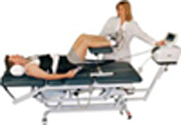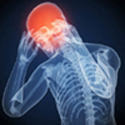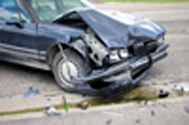|
|
|
Dr. Larry Van Such, DC, BE, EE
2240 Morse Road Columbus, Ohio 43229 (614) 428-9310
January 6th, 2009 Law Offices of Jones and Jones R.J. Jones
Attorney at Law
1234 High Street
Columbus, Ohio 43215
Telephone: (614) 555-5555
Facsimile: (614) 555-5556 Re: Jane Doe Dear Mr. Jones:
The following is in regards to your client, Jane Doe, who presented to our office on January 6th, 2009, for examination in regards to the above-mentioned industrial related incident in reference to percentage of Whole Person Permanent Partial Impairment, utilizing AMA Guides, 5th Edition. HISTORY AND MECHANISM: Jane Doe presented with ongoing complaints of bilateral forearm pain. She states that these complaints have been present since being involved in an industrial related accident that occurred on the above-mentioned date. She described the mechanism of the injury as when she does repetitive movements at work such as bending over in tubs, holding herself up with her hands and wrists, ringing out mops, and carrying groceries. The first facility she went to after the accident was Ohio Health, where she received therapy. Mrs. Doe is currently not under the care of a physician. CURRENT COMPLAINTS AND STATUS: Jane Doe explained that she no longer works for the above-mentioned employer. She states that she now works part time at McDonalds. The patient states that she did not miss any work. Mrs. Doe states that the pain can be constant at times for several days but also will come and go. She describes the pain as a sharp, burning, tingling, throbbing, numbness, stiffness, and aching sensation. The patient states that she has limited mobility of her forearms and wrists. She states that this injury interferes with her daily routine. With limited use of her wrists and forearms, it is difficult or impossible for her to perform the following activities: doing laundry, doing dishes, running sweeper, driving a car, lifting weights, hobbies, sleeping, writing, doing her hair, grasping small objects, and using her hands. Mrs. Doe states that since the accident she now has to use splints for both of her forearms. Cold and damp weather also increase her symptoms. All of the above mentioned complications fall under the chronic pain category where up to 3% impairment is given/added to this claim based on the ongoing burden of illness disrupting activities of daily living. Jane is given 1% WPI today. Reference AMA guides, 5th edition, Chapter 18, Tables 18-1, 18-3, 18-4, 18-5, 18-6 and page 584 item 5b. OBJECTIVE:
Musculoskeletal
Deep tendon reflexes were +2 and symmetrical of the biceps, triceps, and were elicited bilaterally and equally of the brachial-radialis. Finkelesteins test was positive bilaterally indicating tenosynovitis. Sensory testing: The patient was unable to discern between two sharp points of contact within 40mm (<5mm is normal) over the C6 and C8 dermatomes in the left and right wrists. Grip strength was 40 lbs right and 45 lbs left. Pressure applied to the radial/carpal and ulnar/carpal joints elicited pain. Flexor carpi ulnaris and radialis muscles were hypertonic bilaterally in the forearms. Right wrist measured 17 cm circumference and 16 Ĺ cm in the left. Right Upper Extremity Impairment
Right Wrist Range of Motion
RIGHT WRIST RANGE OF MOTION IMPRESSION: A.) Flexion = 5% impairment. Total right wrist impairment = 9% UEI according to AMA Guides, 5th Edition, Chapter 16, pages 467-470. A 9% UEI equals a 5% WPI. Reference Table 16-3, page 439 Left Upper Extremity Impairment
Left Wrist Range of Motion
LEFT WRIST RANGE OF MOTION IMPRESSION: A.) Flexion = 5% impairment. Total left wrist impairment = 12% UEI according to AMA Guides, 5th Edition, Chapter 16, pages 467-470. A 12% UEI = 7% WPI. Reference Table 16-3, page 439.
Total WPI calculation
using combined values chart page 604
7% (Left UEI) combined with 5% (Right UEI) = 12% WPI
12% WPI plus 1% (Pain/ADLís) = 13% WPI.
DISCUSSION AND OPINION: The following impairment rating has been given to Jane Doe after a thorough history, orthopedics, neurological, grip strength, and range of motion examinations were performed on January 6th, 2009. It is my professional opinion that Mrs. Doe has sustained a 13% Whole Person Impairment. This impairment rating falls into the Range of Motion category, November 2000, 5th Edition AMA Guides to the Evaluation of Permanent Impairment. Respectfully Submitted,
Dr. Larry Van Such, D.C., B.E.
Chiropractic Physician
Welcome Ohio BWC Injured Workers
Important facts every Ohio BWC Injured Worker should know about selecting a doctor Frequently Asked Questions of the Bureau of Workers Compensation |










